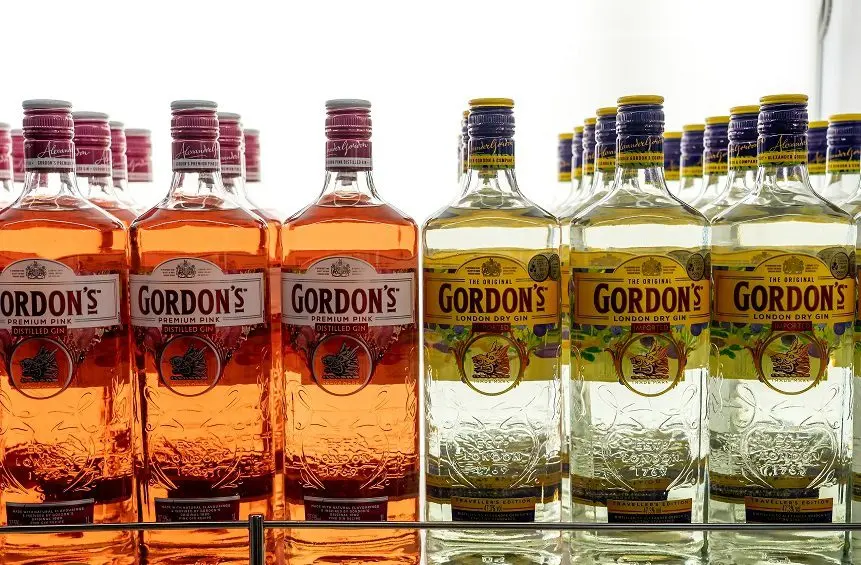The gin market has shown rapid development in recent years, and the number of participants in industry competitions is growing exponentially. The Spirits Business experts note that the number of stamps submitted to the competition has tripled over the past five years. In the competitive struggle, manufacturers are carried away by experiments with the composition and give priority to pink gin, which has become mega-popular.
The Spirits Business
The Spirits Business judges select the best gin in each price category and award medals to brands with the highest quality. In 2019, the biggest variety was in the Standard class, where drinks with the lowest cost competed.
Two gold medals were won by the Australian manufacturer Aldi. The awards went to the classic Darley’s Traditional Dry Gin and Harrison, a gin with a floral aroma and a fresh juniper-pepper taste. In 2018, the brand was also the leader in terms of the number of awards – experts noted Topaz Blue with a rich fruity bouquet and the same Harrison.
In the premium price category, Lidl’s Aquine Scottish Craft Gin was awarded gold, recognized by the judges for its excellent balanced taste with bright notes of cucumber and basil. One of the largest food discounters in Europe, Lidl, has firmly established its niche in the gin market and launched a line of thirteen new brands in 2018. The manufacturer received four gold medals at the competition.

Most of the top awards have gone to ultra-premium London Dry Gin style drinks. The Martin Sesse brand won the admiration of the judges for its complex spicy aroma and smooth taste. Lighthouse Gin caught the eye of experts for its citrusy bouquet, while Copenhagen gin was praised for its dense juniper bouquet with excellent balance. In terms of the number of medals, the British company Atom Brands was in the lead – as many as three types of the manufacturer’s gin received Masters in 2019.
For the second year in a row, the Russian Ladoga Group represented the Barrister Old Tom Gin at the competition, which both times won silver awards. The strong drink is produced by a plant in St. Petersburg, the blend is made according to an old English recipe. Gin with a pleasant balanced flavor with hints of almond and cardamom is great for mixing cocktails.
World Gin Awards
The South African Cruxland, with its tangy flavors of fresh orange, mint and pepper, has been named the World Champion London Dry Gin at the UK World Gin Awards 2020. In 2018, the brand was also the best in its category. In the 2019 competition, I won the Irish Dingle Distillery Original Gin. Experts noted the multifaceted taste of the drink with many shades, among which creamy toffee and caramel stand out.
The best classic in 2020 was Bergslagens, an organic gin from Sweden that, when diluted to 20%, acquires the taste of pine and citrus fruits. In 2019, the Australian Never Never Distilling Co was the first with hints of cinnamon, thyme and tree bark.
Among the mature drinks, experts noted Lubuski produced by the Polish company Top Spirits Ltd. This is the first aged gin to be produced in the country – the drink matures in oak and chestnut barrels and is recommended for drinking in its pure form with the addition of ice. In 2019, the champion of the category was the Swedish Hernö with 47% alcohol, which, after distillation, is stored in juniper barrels for a month. This gives the drink more intense coniferous notes, mixed with hints of herbs, pepper and vanilla.
Gin rating in Russia
In 2019, gin sales in Russia increased by almost a quarter. Although the traditional British drink is named among their favorites by only 2% of buyers, its popularity is growing due to the fashion for cocktails that has spread among young people. Consumers are showing interest in new types of alcohol, and Russian producers are producing more and more affordable gin brands.
Gin quality rating according to Russian buyers:
Barrister – production of the St. Petersburg company “Ladoga” includes six types of gin, including classic and flavored types.
Beefeater is the third most popular gin in the world, made according to a recipe from the end of the XNUMXth century. Sales records are beaten by the classic London Dry Gin with a mild taste of pine needles and citrus fruits.
Gordon’s – the world famous gin has been produced since 1769 in the same composition. When mixed with tonic, almond bitterness is added to coniferous and lemon tones.
Bombay Sapphire is a relatively young brand that appeared only in 1987, but has since acquired cult status. Sold in blue glass bottles.
Logan’s – products of the not too well-known Italian company Polini Group gained popularity due to its high quality and affordable price. A dry and invigorating drink recommended for martini cocktails.

The high demand for gin is explained by the simplest cocktail recipe – to reveal the taste of the drink, it is enough to mix it with tonic.
Prospects for Russian gin
In 2019, Ladoga increased Barrister sales by 2,5 times, while Beluga Group is increasing production of the domestic brand Green Baboon and plans to sell up to XNUMX boxes a year in the next five years. According to experts, in the future the demand for gin in Russia will only grow.









